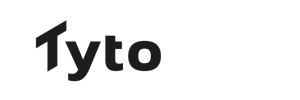Why efficiency shouldn’t be a dirty word for PR and comms agencies
Yesterday Sir Martin Sorrell’s S4 Capital issued its second profit warning blaming weaking economic conditions in Europe. “Clients don’t see the revenue growth opportunities in Europe,” the ad agency head said, “they see it as a cost reduction exercise.” If clients are trying to save costs and be more efficient, then agencies need to react by finding their own efficiencies. Sorrell acknowledged that S4 Capital has been behind the curve on this: “We clearly have not been as focused on efficiency as we should be.”
But what exactly does it mean to become more focused on efficiency within an agency context? And why is it too often seen as a euphemism for cuts?
The definition of efficiency according to the Oxford English Language dictionary is the “ratio of the useful work performed by a machine or in a process to the total energy expended”. At its most basic in an agency environment, this is about maximising the profit margin you make from your investments in people and technology. For agencies like Sorrell’s S4 Capital, the goal is to hit or exceed a 20% profit margin.
For many agencies the binary way to respond to a drop in revenues is to cut costs, and in a people-focused PR and communications business where staff costs will make up anywhere between 50-65% of your overhead, the obvious way to do this is to reduce headcount and extract more work from the headcount that you retain. There’s nothing wrong with this classic reaction to a shrinking business and in many ways, it’s the responsible thing to do in order to safeguard the long term health of a business, but this classic response can damage morale and agency reputations, weaken overall capability that’s been hard fought to build in the first place, and ultimately mean you are less well placed to respond to an upturn in the market when it occurs.
This response tends to place additional strain on employees and can make efficiency a dirty word within agencies because it becomes a code word for cuts.
This therefore begs the question of whether there are any more positive and expansive ways to think about the drive for efficiency? At the heart of this question for me is whether there are ways that you can engineer a “less is more” outcome rather than a “less is less” outcome. There are four potential ways to achieve this more desirable “less is more” outcome.
First, if you are seeing revenues decline in one area of your agency, is there the potential to grow your scope in other ways by helping clients to consolidate their agency relationships and provide them with a higher, more holistic level of service? This way you might be able to redeploy valuable talent to other service lines in your business, avoiding the costly process of downsizing while making client relationships more strategic, stickier and more valuable.
To achieve this, you need to help solve more of your client’s communication challenges by offering a broader range of services. One way to do this is if your client base is weighted heavily to traditional PR services, for example, is to sell more integrated packages. Content sits at the axis of most PR and marketing and is the obvious area to invest in and focus on. This is strategic to the agency and empowering for our clients, which is why we have placed the Tyto Content Studio at the heart of our business.
A second way to help clients to be more efficient while growing your strategic role is to consider whether you can help clients address a wider number of countries with the campaigns you are developing and running for them. During the good times clients often employ multiple agencies across Europe, leading to duplications of strategies and creative plans. This can get out of control and leave clients exhausted trying to hold things together trying to drive a cohesive strategy.
During the leaner times clients become more strategic about what they want to communicate and become focused on telling one clear powerful story. Greater discipline and focus can often yield significant strategic as well as financial benefits. If you can help clients to consolidate their creative and strategic plans, and streamline their multi-national execution, then you can help them to be more efficient and impactful without compromising markets reached. This also grows and strengthens your client partnerships.
A third possibility, which might take longer to realise efficiency gains, is to think about how you can deploy technologies to help your team to be more efficient. We’ve always invested big agency size budgets in tech, despite being only a small agency, because we’ve always believed that we want our team to be doing the highest value creative work, not draining resources on time-intensive admin.
A fourth and more all-encompassing way to think about efficiency is to consider whether there is room for even more significant structural innovation in your agency model. Our interpretation and response to this challenge was to build a fully integrated pan-European agency model with one management structure and one pan-European agency account structure for clients which we call PRWithoutBorders™️.
Your willingness to entertain these different, and I would argue more positive and expansive efficiency strategies, will depend upon your overall financial health and ability to ride out a storm. If you can make a long term strategic plan to address efficiency, rather than short term cuts, then I’d argue that it’s worth bearing temporary pain for the inevitable future gain it will deliver to your clients, your team, and ultimately your overall business.











